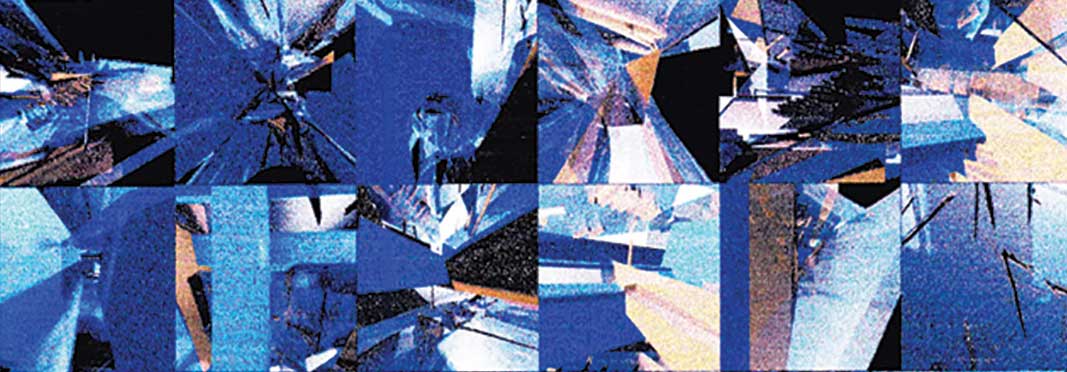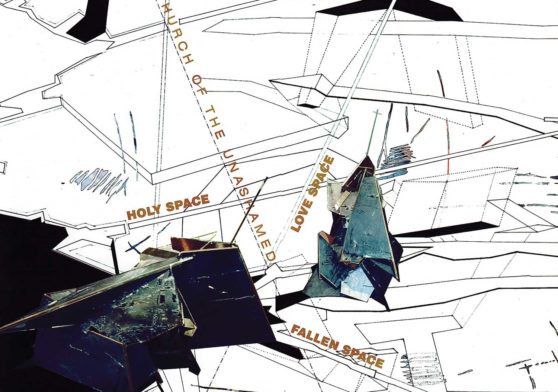
“We shape buildings; thereafter they shape us.”-Winston Churchill
Imagine the design feature of the next underground train station in Singapore—an interactive wall, where a passerby would engage it through his smart phone. As he transfers a tweet, an Instagram image or Tik Tok video onto the wall, he leaves behind a piece of his story. With each passerby, the wall becomes a cumulative collection of stories, growing and evolving into a digital piece of art. While the wall transforms, it projects back the experience of the commuters and their lives onto a new passerby as he journeys through the train station. This new passerby responds with his own story reshaping the wall. Thus, the wall continuously evolves, taking on a life of its own, fueled by stories.
Stories have power. Power to inform. Power to change. Power to transform. Power not just to morph a wall, but also to shape buildings and architecture, and transform our very lives. What stories do we allow into our lives and meander inside our head? What stories affect our subconscious and spirit? What stories shape us?
Many years ago, as an architecture student in the United States, the story of the Staines had a profound effect on my design work. I reflected on the progression of their story, from the journey to the massacre, from the reaction of forgiveness to endurance of mission, from despair and disgust to love conquering hate. It opened up a new possibility of designing sacred Architecture, by transferring the experiences of the people of God into architectonic form, in the form of a series of artwork that retold that story. These artwork then became the template from which a new design language emerged representing the architecture of God, born out of the story of the Staines.
Architectonic reaction to the Story of the Staines, begins with Image D01, which is part of a series of Etchings on large Zinc sheets, capturing the essence of their story with marks, lines and incisions. Instead of using traditional acid to make surface marks on Zinc sheets, power tools were used to cut, drill and make physical alterations of the sheet to capture the emotional pain and tenacity of the story. The Prints that were produced with these sheets were analyzed and interpreted into Spatial Drawings, illustrated through Images V01-V04. Theses Spatial Drawings become the basis for Interior Spaces of a Building illustrating the story. Adapted from D.K. Ameresekere (2000), The Church of the Unashamed, unpublished thesis, University of Pennsylvania.
January 23rd1999 Burning death
They burned the Staines alive. A mob crowded the van of Graham Staines and his two sons, six and ten, and burnt them alive. The mob had surrounded the van, poured out oil, shouted praise to their god and set the van on fire. Staines were an Australian missionary family living in India working at a leper colony. In spite of persecution, the wife and daughter would stay on in India to continue the work at the leper colony.
What do you think happened in that community when love was shown to the enemy? When forgiveness was extended by the wife to the killers of her husband and sons? Isthis a fitting story to illustrate the love of God, working itself out through the lives of His people?
Imagine experiencing the story of the Staines through Architecture. As you traverse through the building, the design illustrates the story, projecting you into their drama, inviting you to be an active participant. Meandering through the carefully crafted corridors and explosive halls, experiencing reflective spaces and points of despair, from dark tunnels to rays of light bursting out hope, the building weaves the experiences of the Staines onto your own journey. By documenting and retelling the story of the Staines in such a visual manner, it inspires others who are followers of the Christian journey to continue with faith and perseverance, whatever the obstacles or pain life brings. This pictorial witness of faith is a fitting means of communicating truth and meaning, in an age where imagery plays an ever increasing role. Further, this pictorial witness of faith forms a visual testimony of their journey, giving evidence and fruit of their Christian life.

The Spatial Drawings that came out of the Etching process were generated into a three dimensional computer model. With a camera traversing through the model, the experience of travelling through the Building was captured in a series of Perspectival Images (Illustrated above), as a series of Interior Views of the Building woven together like a film strip of a movie production. These Perspectival Images became the basis of the Plan, Section, Interiors and Exterior Form of the Building. Adapted from Ameresekere.
The visual testimony represented in the building, is not just a story of human faith, but beyond that a story of one who gives faith. The story of the Staines, points to the God who gives faith. By illustrating their story in an architectural fashion, ultimately the building in itself, points to God. The building projects God’s invisible attributes seen through the story of the Staines into three dimensional form experienced by one going through the building. The spatial journey is intermingled with tactile experience of the building to attest who God is and his influence on the stories of men. With God and stories of men merged together, in such a fashion, the building presents an appropriate language to design sacred Architecture. Further, the manner in which the building points to God is fresh and unique, by applying contemporary design language to engage the culture of today. Thus the sacred architecture developed with such an approach would not just point to God, but also be culturally relevant.
When designing sacred Architecture over history such as church buildings, ritual or tradition played a large role in the architectural design and detailing. Modern evangelical churches have mostly replaced these rituals and traditions in church buildings with mere form, driven by pragmatic needs, with little or no thinking of any theological underpinnings in their designs. Church growth and church programs seem to dominate the manner in which church buildings are designed the way they are today.
Stories of faith, such as the story of the Staines provides us an opportunity to relook at sacred Architecture. If the personal stories of faith become the starting point for design, the building form generates out of their unique story. In this case, the story of the Staines becomes the form-generator, where sacred Architecture is not based on ecclesiastical traditions or abstract theological metaphors, but rather based on real life personal experiences of the people of God. Personal Christian experiences and stories become a fitting identity and form-generator, pointing to the personal nature of God. God then is presented not as one who is lofty and far off, rather an accessible and approachable God. A God who understands our struggles. A God who not just sympathizes, but the only one who through his sacrifice on the cross, is uniquely acquainted and empathizes with our pain. A God who intervenes in our lives and rewrites our story.
The Zinc sheets that were used in Etching process were transformed to become the Architectural Model of the building that the Staines story represented. The sheets were cut up and transformed into the building form as illustrated in the above image. Holy Space, Love Space and Fallen Space, thematic considerations in the program for the Building, brought out the Larger Story — the Mission of God. Adapted from Ameresekere.
While our Christian story and its manifestation in architectural form, point to God, it is simply a reflection, that too on a broken mirror, of another story. Our stories are part of a larger story, far greater than our own stories giving our lives meaning, purpose and significance in being part of something transcendental. The larger story we are ultimately called to be part of, is the greatest of all stories – God’s very own ‘sacrificial-redemptive-missional’ story. It is the real, lofty, heart-wrenching story of the infinite, personal and transcendentally holy God, reaching out to reconcile rebellious, fallen man, displaying the depth, height and breadth of self-effacing, sacrificial love – true love! The Mission of God, is God’s answer to a dying humanity. It is a story of a loving Father, wanting to bring back his lost wayward son. It is a story of great price, where the cost of the mission was God’s own son. It is a story of a great reversal, where the victim becomes the victor. In it lies all hope for mankind. Our sacred Architecture ultimately points to this greatest story—the story of God in history.
“And they overcame him by the blood of the Lamb and by the word of their testimony” – Rev. 12:11


Architect Dan Ameresekere
Dan has a BA (Yale), MArch (UPenn), and MA (Theology/BTS), AIA. He is the Managing Director of Design One Limited, Sri Lanka.
